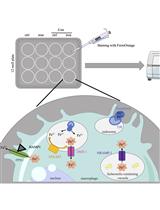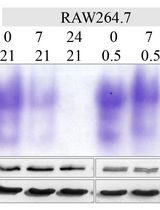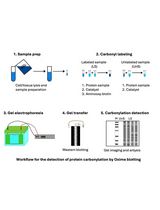- EN - English
- CN - 中文
Murine Pharmacokinetic Studies
小鼠药代动力学研究
发布: 2018年10月20日第8卷第20期 DOI: 10.21769/BioProtoc.3056 浏览次数: 14853
评审: Jia LiRani OjhaGiada G Mondanelli

相关实验方案

在平板检测仪中使用高特异性荧光探针定量巨噬细胞细胞二价铁 (Fe2+) 含量
Philipp Grubwieser [...] Christa Pfeifhofer-Obermair
2024年02月05日 1587 阅读

哺乳动物线粒体和胞质顺乌头酸酶的凝胶内活性测定——分区特异性氧化应激与铁状态的替代标志物
Wing-Hang Tong and Tracey A. Rouault
2024年12月05日 1250 阅读
Abstract
Murine pharmacokinetics (PK) represents the absorption, distribution, metabolism, and elimination of drugs from the body, which helps to guide clinical studies, ultimately resulting in more effective drug treatment. The purpose of this protocol is to describe a serial bleeding protocol, obtaining blood samples at six time points from single mouse to yield a complete PK profile. This protocol has proved to be rapid, highly repeatable, and relatively easy to acquire. Comparing with the conventional PK studies, this method not only dramatically reduces animal usage, but also decreases sample variation obtained from different animals.
Keywords: Blood (血液)Background
Pharmacokinetic, from ancient Greek pharmakon “drug” and kinetikos “movement”, studies how the body handle drugs. In vivo murine PK studies are crucial to ensure compounds have appropriate PK properties in preclinical pharmacology and toxicity studies. The drug concentration can be measured in the blood, plasma, urine or other easily sampled fluids. However, in vivo PK studies have been traditionally low-throughput experiments: 6-12 terminal blood samples per compound in triplicate, requires 18-36 mice per study. The high animal usage and labor-intensive sampling are main hurdle for this conventional assay. With the improving sensitivity of bioanalytical method, efforts to increase the PK throughout have been reported including the use of cassette dosing (Berman et al., 1997, Korfmacher et al., 2001), Snapshot PK method (Liu et al., 2008) and more recently, Fast PK (Reddy et al., 2012). We have established a serial bleeding protocol, in which six blood samples can be collected from same mice by a submandibular vein (cheek) bleed, the orbital bleed and a cardiac puncture (terminal bleed) at a very narrow time window after administration of drugs. The protocol ensures collection of blood at specific time point and decreases variability among multiple subjects with dramatically decreased animal usage. This method is extremely valuable for the murine pharmacokinetics study with limited number of animals, and compounds with short half-life or fast clearance property.
Materials and Reagents
- Syringe: BD 1 ml Syringe with 27 G x 1/2 in needle (BD, catalog number: 309623 )
- Capillary (Fisher Scientific, FisherbrandTM, catalog number: 22-362566 )
- Oral gavage needle (Reusable Small Animal Feeding Needles) (Cadence Science, catalog number: 7905 )
- Eppendorf tubes (Eppendorf® Safe-Lock microcentrifuge tubes) (Eppendorf, catalog number: 022363611 )
- Non-sterile cotton gauze sponges (Fisher Scientific, FisherbrandTM, catalog number: 22-362178 )
- Tubes to collect blood obtained from cardiac puncture (SARSTEDT, catalog number: 2022-07-31 )
- Oatp1b2 KO and wild-type DBA mice (between 8 and 12 weeks of age, see Procedure for details)
- Nilotinib (Chemietek, catalog number: CT-NL001 )
- Paclitaxel (LC Laboratories, catalog number: P-9600 )
- Saline (Hospira, NDC:0409-4888-02)
- Hydroxypropyl methylcellulose (HPMC) (Sigma-Aldrich, catalog number: 09963-25G )
- Cremophor EL (Sigma-Aldrich, catalog number: 238470-1SET )
- Ethyl alcohol (Sigma-Aldrich, catalog number: E7023 )
- Pipet rubber bulb for capillary tubes (Globe Scientific, catalog number: 51674 )
- Isoflurane (Henry Schein, NDC 11695-7667-1)
- 0.5% (m/v) HPMC (see Recipes)
Equipment
- Lancet, Goldenrod 4 or 5 mm (MEDIpoint, catalog number: Goldenrod ANIMAL LANCET 4MM )
- Pipettes, 200 μl and 20 μl single channel pipette4 (Mettler-Toledo, ShopRAININ, model: Pipet-Lite XLS+, catalog numbers: 17014391 and 17014392 )
- Red lamp (UL E187949F, 250V, 660W)
- Scout Pro Balance (OHAUS, model: SP202 )
- Tail vein injection platform (in low tail injection platform) (AIMS, catalog number: IL300 )
- Centrifuge (Eppendorf, Mini spin plus, model: 5453 )
- Sonicator (QSONICA, model: Q55 )
- Vaporstick anesthesia Machine (Smiths Medical, Surgivet, model: V7015 )
- Classic T3Vaporizer (Smiths Medical, Surgivet, model: VCT302 )
- Digital vortex mixer (Fisher Scientific, FisherbrandTM, catalog number: 02-215-370 )
Software
- WinNonlin 6.2 software (Pharsight, Leblanc et al., 2018)
- Graph Pad prism 6.0
Procedure
文章信息
版权信息
© 2018 The Authors; exclusive licensee Bio-protocol LLC.
如何引用
Leblanc, A. F., Huang, K. M., Uddin, M. E., Anderson, J. T., Chen, M. and Hu, S. (2018). Murine Pharmacokinetic Studies. Bio-protocol 8(20): e3056. DOI: 10.21769/BioProtoc.3056.
分类
细胞生物学 > 细胞新陈代谢 > 其它化合物
您对这篇实验方法有问题吗?
在此处发布您的问题,我们将邀请本文作者来回答。同时,我们会将您的问题发布到Bio-protocol Exchange,以便寻求社区成员的帮助。
提问指南
+ 问题描述
写下详细的问题描述,包括所有有助于他人回答您问题的信息(例如实验过程、条件和相关图像等)。
Share
Bluesky
X
Copy link












